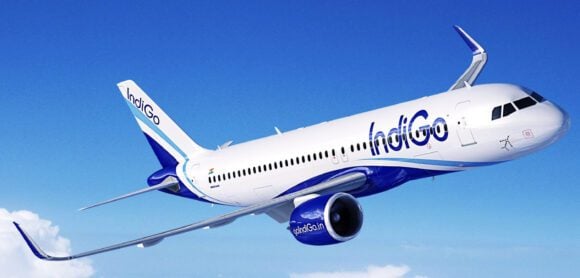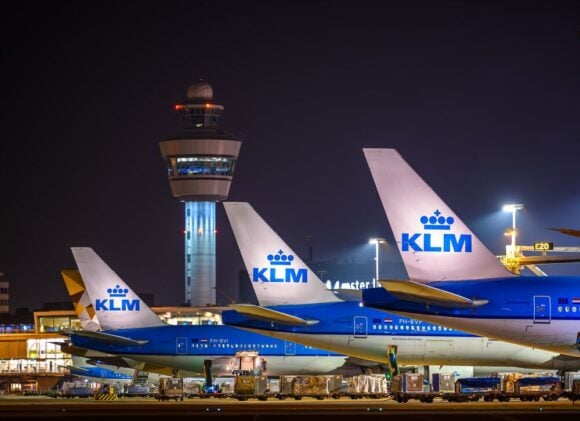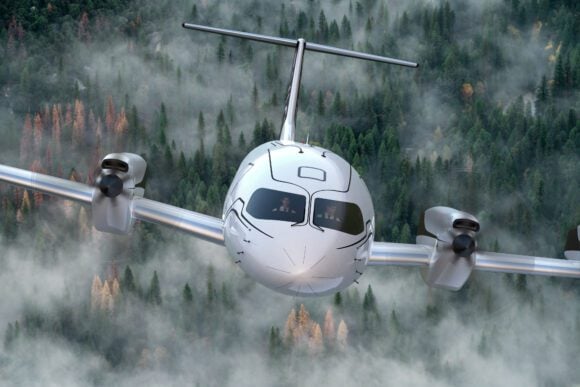
320884843 5715436661874922 7243220682173209336 n
Air travel in Europe recovered to 83 percent of 2019 levels by the end of last year or to 9.3 million flights. This is 3.1 million flights up on 2021, but still 1.9 million down on 2019, Eurocontrol says in its 2022 analysis paper. The organization sees further recovery in 2023, but that won’t come without issues. Air travel Europe recovers but punctuality suffers.
Eurocontrol notes that the recovery of the number of flights from 70 percent at the beginning of 2022 to on average 83 percent at the end is in some way remarkable, given that the first months were dominated by the downturn caused by the Omicron virus. And then, at the end of February, Russia started the war in Ukraine, which affected airspace in some parts of Europe. But the effects of both crises were rather limited and traffic already hit 86 percent in May and remained between 86-88 percent for the rest of the year.
European airlines carried a combined two billion passengers last year. The busiest carrier by the number of daily departures and arrivals was, as in 2019, Ryanair, with 2.536 daily flights. This is up nine percent on 2019 or 77.000 flights over the full year.
easyJet was runner-up with 1.335 flights, but this is twenty percent down in 2019. Turkish Airlines came third with 1.245 flights (-7 percent) and outpaced Lufthansa, which operated 158.000 fewer flights largely due to strikes last summer.
Air France is in the fifth spot, ahead of KLM, whereas British Airways dropped two places in the listing, behind Wizz Air ahead of subsidiary Vueling and SAS. Wizz saw a fourteen percent increase in the number of flights, or 30.000 extra.
“Lufthansa, Air France, and KLM, as traditional mainline carriers reliant on a hub model, have recovered slower than their low-cost counterparts. In particular, Lufthansa (-29 percent versus 2019) has seen a very weak recovery in German internal demand, with a rise in alternative methods of travel or reduced business travel by air”, the Eurocontrol report notes.
Delays
But as the year progressed, the more serious became staffing issues at airports and air navigation services providers across Europe. Flights departed on average 17.6 minutes late by the end of the year, up from 13.1 minutes in 2019. “Arrival schedule delay (actual arrival time compared with scheduled arrival time) increased to 16.9 min/flight from 12.7 min/flight in 2019 (+33 percent). Departure schedule delay was also up to 19.6 min/flight in 2022, rising from 15.3 min/flight in 2019.”
As a result, punctuality suffered: arrival punctuality was on average 71.7 percent, down 6.4 percent from 2019. Departure punctuality dripped by even 6.8 percent to 65.9 percent. During the summer peak, punctuality dropped to between 50-60 percent. Of the delay, on average 2.17 minutes was caused by air traffic management issues and ATM inefficiencies.
In the top ten of most punctual European airlines, Vueling is in the top spot, followed by SAS (despite or maybe even thanks to the long summer strike…), KLM, and Ryanair, while Wizz Air is in the top ten position with punctuality between 50 and 60 percent.
The busiest airport in Europe was Istanbul, which saw 1.156 daily flights. Despite the capacity cap that has been in place since June, Amsterdam Schiphol is closely behind with an average of 1.140 daily flights, which is just eighteen flights more than Paris Charles de Gaulle.
Eurocontrol also looked at the status of carbon dioxide emissions. Between January and November 2022, these were 19.6 percent lower compared to 2019 at 15.1 percent fewer departures. Excess fuel burn was between 3.1 and 6.1 percent, well below the seven to eight percent in 2019. The report notes that long-haul flights, which account for 5.5 percent of all flights, are responsible for 43.9 percent of all emissions. Short- to medium-haul flights (share 43 percent) cause 23.2 percent of emissions.
Outlook
In its outlook for 2023, Eurocontrol expects air travel in Europe to further recover to 92 percent but not return to full pre-Covid levels until 2025. This is one year later than it the June forecast and takes the weak economic growth, inflation, and the continuation of the war in Ukraine into account.
“However, 2023 is set to be the most challenging year of the last decade. Keeping summer delays down will be an immense task for all actors, with airspace issues due to the Ukraine war, new aircraft delivered, possible industrial action, system changes, and the progressive reopening of Asian markets all asking real questions of the system.”
Views: 19







